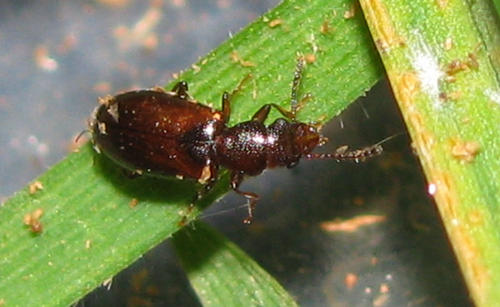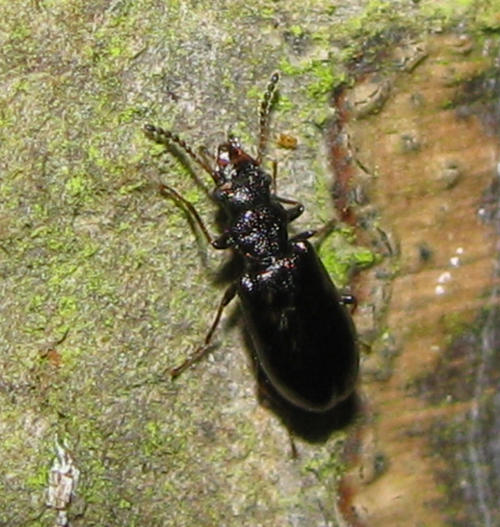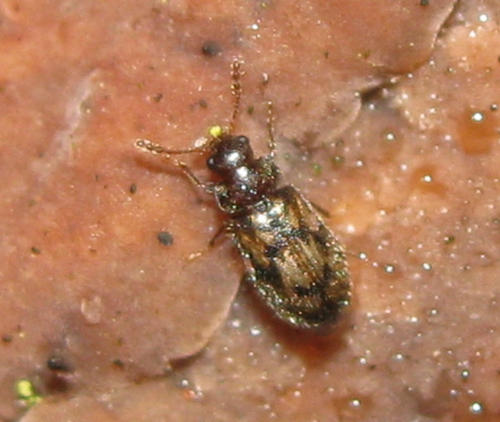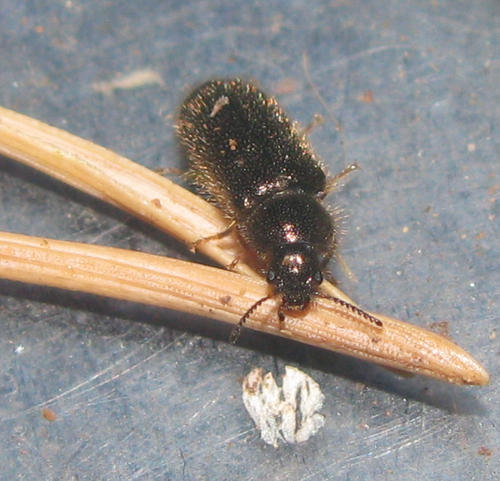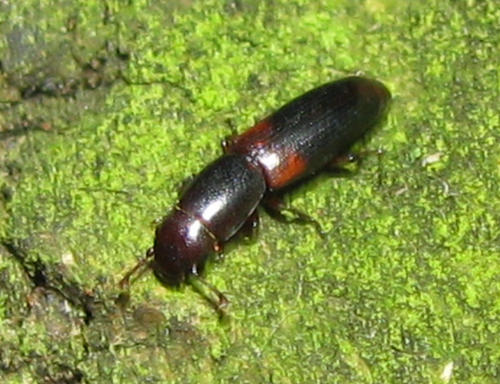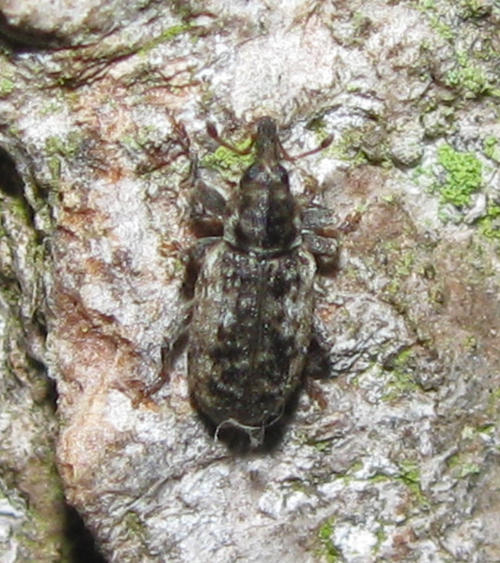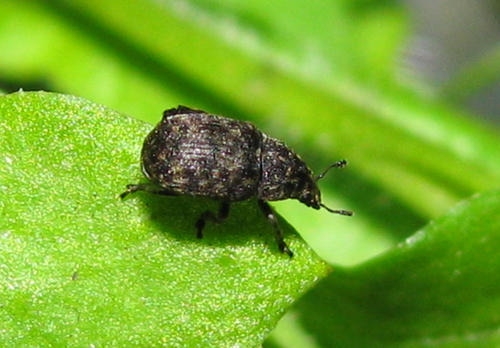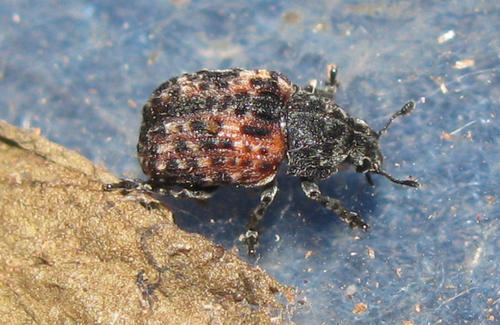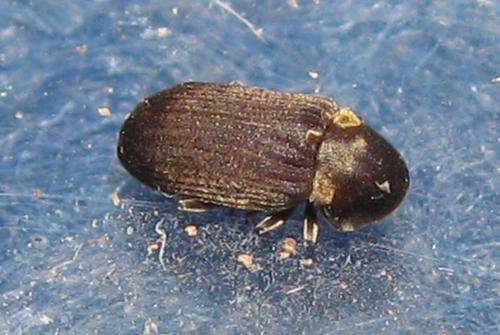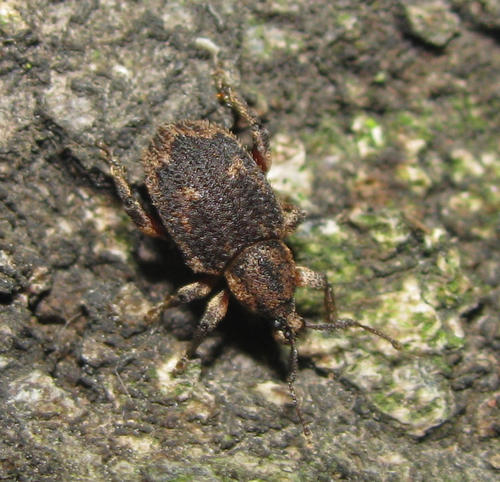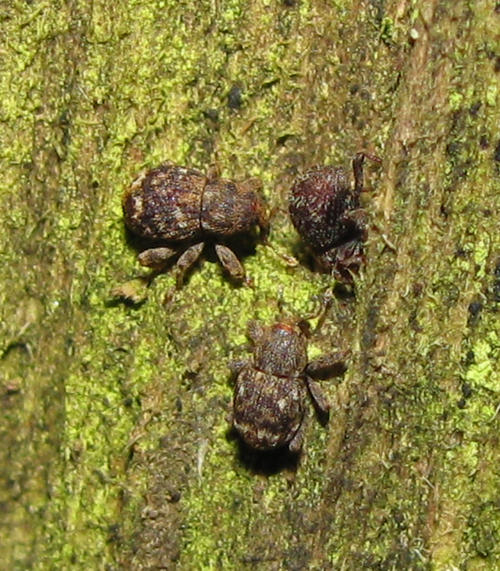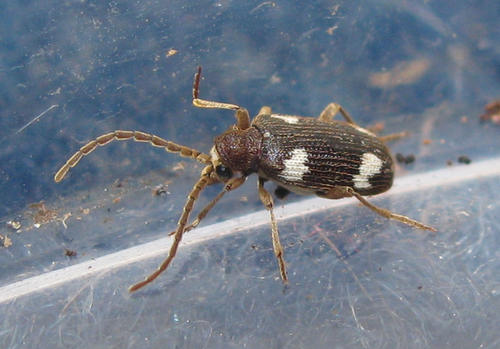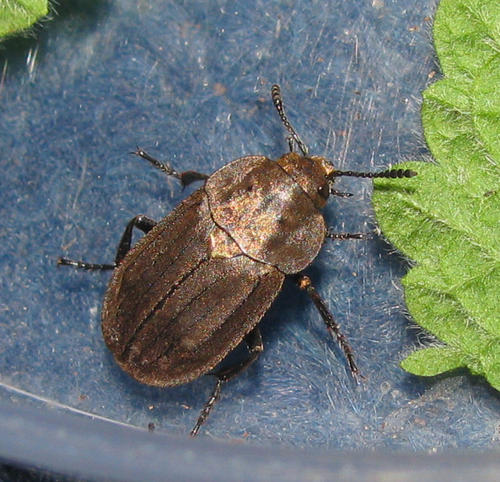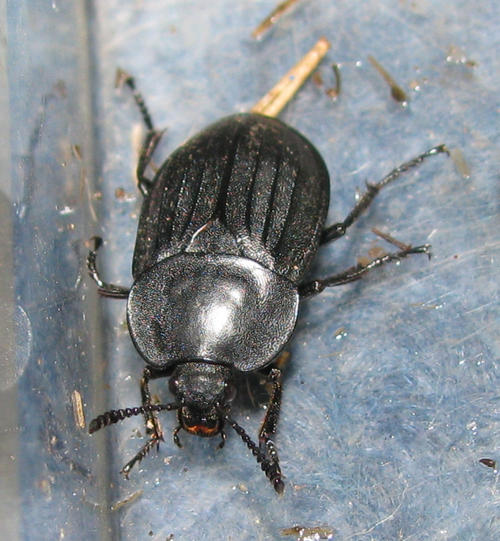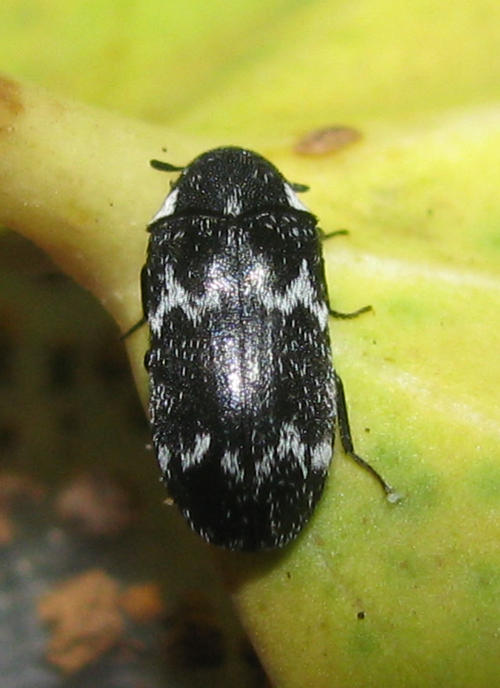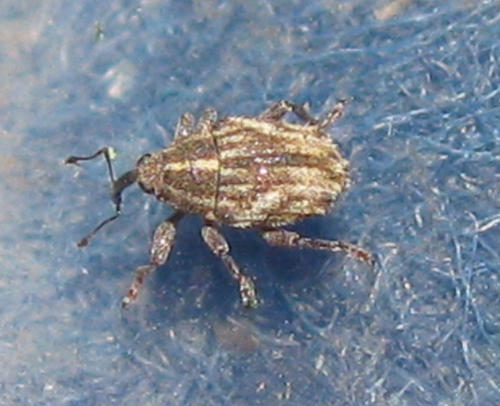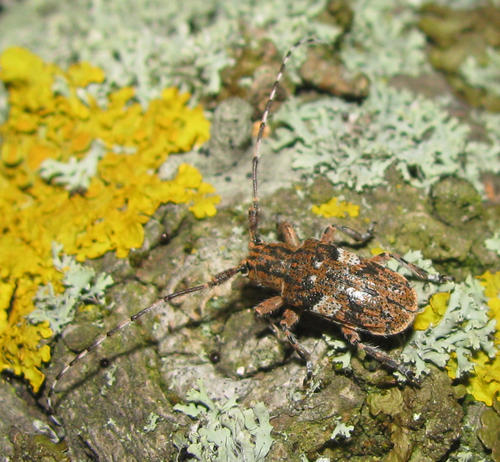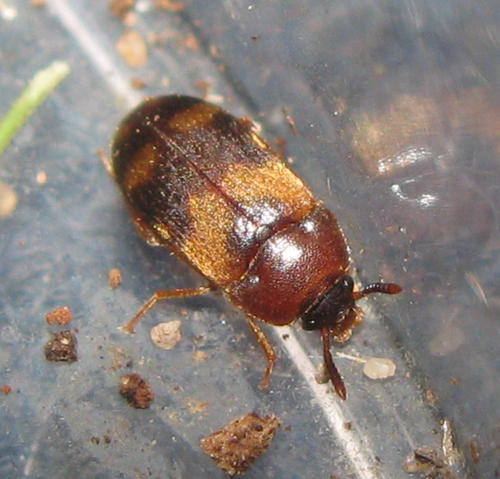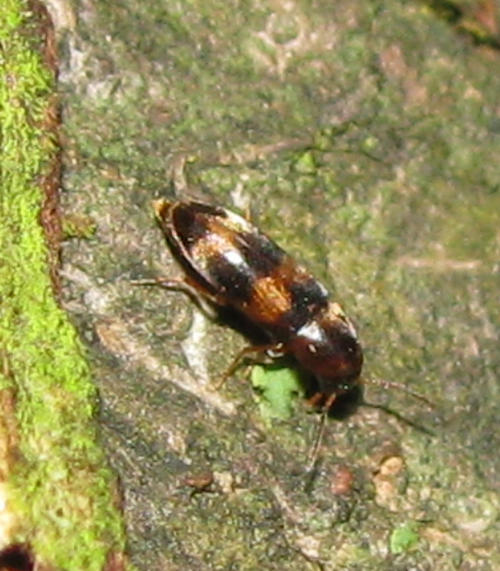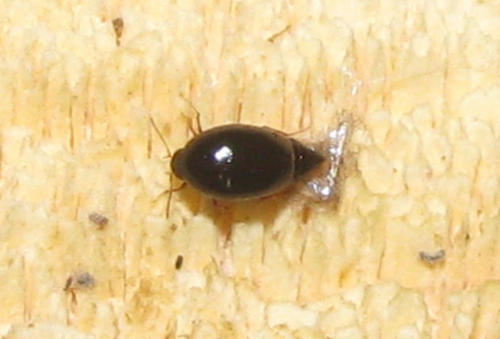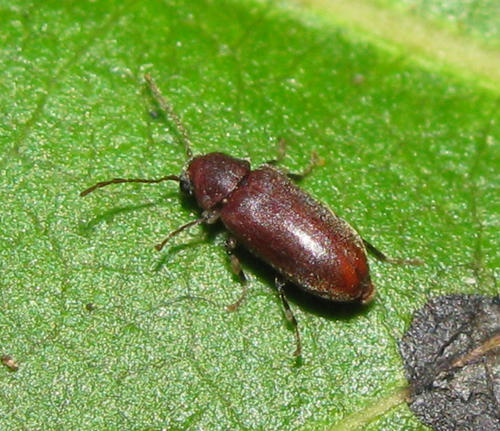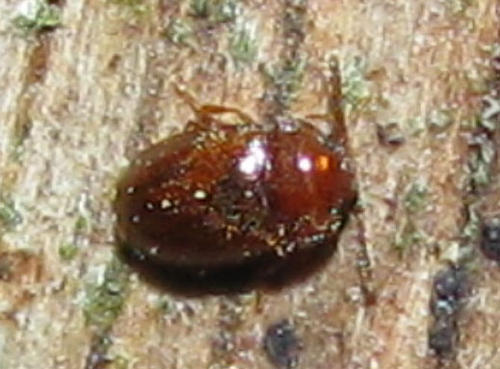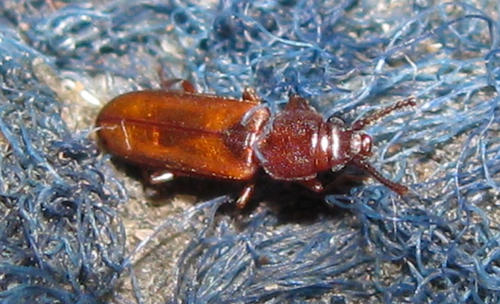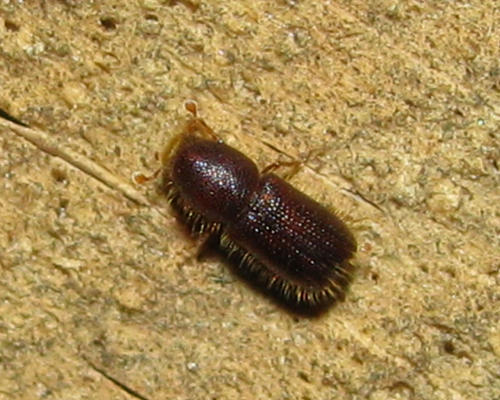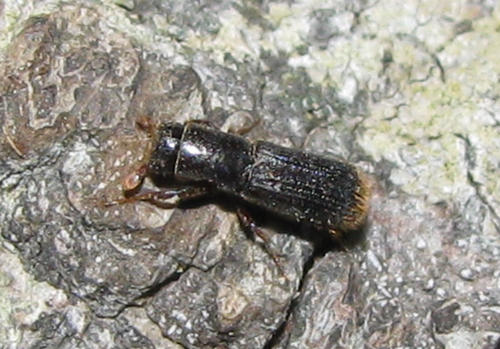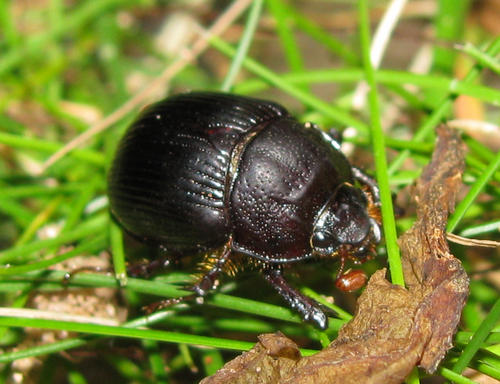Coleoptera of note in the Kidderminster area, Winter 2011-2012
Alan Brown
Well, there was no let up in my survey recording last winter, all done within two miles of Kidderminster. I started off recording ladybirds and then I noticed certain beetles were still active during the winter months so I recorded those as well. Others I recorded hibernating and come the spring of 2012 I turned to some of our lesser known species, Silphidae, etc. Then in late spring I went back to saproxylic beetles and also began recording some interesting weevil species for the first time. I was quite amazed at how many different species I was recording compared with last year’s finds. My time searching suitable habitats was severely curtailed by the bad weather but I persevered and was rewarded beyond my expectations. To be able to observe these species active at night was really quite fascinating. My only disappointment is the fact that one of the most important habitats, namely hollowed out oak trees are almost non existent in the Kidderminster area: I saw only two. Nonetheless the results of the survey shows there is still a vast array of species to be found here. All the species listed were recorded at night and most have digital photos to match. The approximate body length is given for each species.
Fig. 01. Sphaeriestes castaneus (Salpingidae: local. 3 mm): 2.12.2011.
This was the first winter active species that I came across. A predatory species that I only found on Scots Pine. This species appears to hunt alone but is very active and detected on branches looking for prey. Last individual was seen on January 21st.
Fig. 02. Rabocerus gabrieli (Salpingidae: notable B. 4 mm): 10.12.2011.
Another predatory species. These were active throughout the winter, seen pairing up in early February and then disappeared soon after. I would sometimes find lone individuals on other types of tree, but usually came across this species on Silver Birch in groups up to a dozen situated near small bark beetle galleries. Last one seen on Feb 8th.
Fig. 03. Phloiophilus edwardsii (Phloiophilidae: notable B. 3 mm): 10.12.2011.
A fungus beetle. I found these active throughout the winter months on decayed branches of oak trees, linked to the fungus, Peniophora quercina. Last seen on Feb 24th this species was found at three sites in good numbers around Kidderminster.
Fig. 04. Aplocnemus impressus (Melyridae :notable B. 5 mm) : 20.12.2011.
The adult feed on pollen but the larvae are predatory feeding on various bark beetle larvae. Much more metallic than the photo suggests, I found this species hibernating usually in niches on birch trees but sometimes on Pine also.
Fig. 05. Rhizophagus nitidulus (Monotomidae: notable B. 4 mm): 21.1.2012.
Another predatory species, I first saw active in numbers very early in the year on decaying Silver Birch trees linked to a colony of Xyloterus lineatus. This beetle is very good at slipping into small cavities. Occasionally I saw this species throughout the spring.
Fig. 06. Dorytomus ictor (Curculionidae: notable B. 5 mm): 8.1.2012.
One of the catkin weevils, this species can usually be found active at night on Grey Poplar trees. I usually found this species on the trunks of mature trees very early in the year and others I found in the state of hibernation under Pine bark close by. This species can be seen throughout the year and appears to be doing well in Kidderminster.
Fig. 07. Anthribus nebulosus (Anthribidae: notable B. 3 mm): 22.1.2012.
Unlike most other weevils this is one of two weevil species which are predatory, feeding on various scale insects, larvae parasitising ovipositing female scale insects. It is also restricted to Pine trees. I found a single specimen hibernating in a niche on the trunk of a mature Scots Pine. Very difficult to find and very small.
Fig. 08. Anthribus fasciatus (Anthribidae: notable A. 4 mm): 8.3.2012.
This is the other predatory weevil which also predates various scale insects restricted to deciduous trees. I found four of these hibernating on an open roadside verge. Two were found in niches on a mature Lime and two others on a nearby Cherry tree. A quite colourful species.
Fig. 09. Hadrobregmus denticollis (Anobiidae: notable B. 6 mm): 8.3.2012.
I found one of these behind decaying bark on the same old Cherry tree on the roadside verge. The beetle and larvae feed on dead wood and this species has also been linked to Hawthorn trees.
Fig, 10. Caenopsis fissirostris (Curculionidae:notable B. 6 mm): 7.4.2012.
I saw two of these actively investigating some decaying bark near the base of a mature Beech tree at Hurcott wood. Most records for this species come from West Wales so it was a real surprise to see them in the Kidderminster area. I’ve not seen anymore since.
Fig. 11. Acalles ptinoides (Curculionidae:notable B. 3 mm): 7.4.2012.
A small species associated with decaying wood on very old Chestnut stumps, I first recorded these in good numbers at Hurcott Wood and also in woodland alongside the Devil’s Spittleful Nature Reserve (NR). They are active throughout the spring and summer.
Fig. 12. Ptinus sexpunctatus (Ptinidae:notable B. 4 mm): 24.4.2012.
A spider beetle usually associated with dead wood on deciduous trees, I find these occasionally on decaying Lime trunks and also on an old Cherry tree on a roadside verge.
Fig. 13. Aclypea opaca (Silphidae:notable A. 12 mm): 3.5.2012.
I found a single specimen of the sugar beet beetle on the roadside verge opposite some arable fields. This herbivorous species is well known for its taste for sugar beet but also feeds on cereal plants and various seeding grasses. A beautiful species.
Fig. 14. Silpha tristis (Silphidae: local. 17 mm): 27.8.2011.
The snail hunter. This is a true predatory species that also feeds on slugs and is rarely found in carrion traps. Also seems to prefer open sandy grassland areas. I found these in good numbers at Springfield Park but also on roadside verges and temporary arable meadows.
Fig. 15. Megatoma undata (Dermestidae:notable B. 6 mm): 23.5.2012.
This species is usually found on dead wood feeding on dead insect remains. I found this specimen in open parkland in a niche on a healthy Ash tree next to a pile of decaying willow logs.
Fig. 16. Trichosirocalus barnevillei (Curculionidae:notable B. 2.5 mm):3.5.2012
A herb feeding weevil, I found a good number of these on Narrow Leaved Plantain on sandy, roadside grass verges and temporary arable meadows.
Strophosoma faber (Curculionidae:notable B. 6 mm): 3.5.2012.(no picture).
A seed feeding weevil which is also found in sandy, dry habitats. I found these in good numbers on roadside grass verges on Narrow Leaved Plantain and Yarrow.
Fig. 17. Mesosa nebulosa (Cerambycidae RDB 3. 15 mm): 26.5.2012.
This Longhorn beetle is an extremely difficult species to find due to its natural camouflage. It is usually found after falling from decaying oak branches in the uppermost reaches of mature oak trees. So I was lucky to find two of these on a decaying oak branch barely five feet from the ground. The secret in this case was to search a stunted, isolated old Oak tree. It was about fifteen foot tall with a wide canopy shading the decaying branches beneath. I found this one at Devil’s Spittleful NR.
Fig. 18. Mycetophagus piceus (Mycetophagidae:local. 4 mm): 27.5.2012. A nocturnal beetle found in various decaying oak situations relating to fungus. I found these on a very old oak bough although no fungus was seen. Quite a colourful species.
Fig. 19. Abdera quadrifasciata (Abderiidae:noteble A. 4 mm): 16.6.2012.
I found this species also on decaying oak branches with crust fungi. Active at night on woodland fringe, Devil’s Spittleful NR.
Fig. 20. Scaphisoma boleti (Staphylionidae:notable B. 2 mm):
30.6.2012 [no picture]. Another species linked to decaying wood with fungus, I found two of these on white-rot fungus on a decaying oak log in open situation. Active at night at Devil’s Spittleful NR.
Fig. 21. Ernobius mollis (Anobiidae:local. 5 mm): 22.6.2012. This species is strictly linked to Pine. I found large numbers on a dead, standing Pine tree, I also found them on dead bark on healthy trees. Hurcott Wood.
Fig. 22. Symbiotes latus (Endomychidae:notable B. 5 mm.): 15.7.2012.
A fungus beetle linked to fungus on dead wood, I found four of these on decaying heart wood on an oak with white-rot fungus, active at night. I also found these in wood detritus in the bottom of a hollowed-out oak. Confirmed by Paul Whitehead.
Fig. 23. Pediacus depressus (Cucujidae:notable A. 4 mm):
15.7.2012. Similar to Pediacus.dermestoides, but usually the head and pronotum of this species are bright red and the tooth on the pronotal hind-angles is more blunt. A predatory species I found one active at night on a dead standing Pine investigating a beetle gallery. Devil’s Spittleful NR
Fig. 24. Xyleborus dispar (Scolytidae:notable B. 3 mm): 21.7.2012. The European shot-hole borer. Until recently this species was listed as RDB 3, however this species now increasing its range. I found two of these looking over a recently cut, mature oak trunk at night. Its usual preference is for decaying oak related to fungus.
Fig. 25. Platypus cylindrus (Platypodidae:notable B. 5 mm):
21.7.2012. The Oak Pinhole-Borer has also become much more widespread. I saw plenty of these and the small telltale piles of white shavings on the same recently cut oak trunk.
Fig. 26. Odonteus armiger (Bolboceratidae:notable A. 10 mm):
21.7.2012. A scarab beetle which is very seldom seen, I found one female which is rather less spectacular than the male, on a sandy trail on heathland. This species is usually linked to subterranean fungi and also linked to dung. The female has the ridge running across the pronotum which identifies it. On the heath cattle have been grazing there for most of the year. Devil’s Spittleful NR
Acknowledgements
Thanks to John Meiklejohn whose identifications have been really appreciated and also to Paul Whitehead for some of the trickier identifications.
Images
Fig. 01. Sphaeriestes castaneus (Salpingidae: local. 3 mm): 2.12.2011.
Fig. 02. Rabocerus gabrieli (Salpingidae: notable B. 4 mm): 10.12.2011.
Fig. 03. Phloiophilus edwardsii (Phloiophilidae: notable B. 3 mm): 10.12.2011.
Fig. 04. Aplocnemus impressus (Melyridae :notable B. 5 mm) : 20.12.2011.
Fig. 05. Rhizophagus nitidulus (Monotomidae: notable B. 4 mm) :21.1.2012.
Fig. 06. Dorytomus ictor (Curculionidae: notable B. 5 mm): 8.1.2012.
Fig. 07. Anthribus nebulosus (Anthribidae: notable B. 3 mm): 22.1.2012.
Fig. 08. Anthribus fasciatus (Anthribidae: notable A. 4 mm): 8.3.2012.
Fig. 09. Hadrobregmus denticollis (Anobiidae: notable B. 6 mm): 8.3.2012.
Fig. 10. Caenopsis fissirostris (Curculionidae:notable B. 6 mm): 7.4.2012.
Fig. 11. Acalles ptinoides (Curculionidae:notable B. 3 mm): 7.4.2012.
Fig. 12. Ptinus sexpunctatus (Ptinidae:notable B. 4 mm): 24.4.2012.
Fig. 13. Aclypea opaca (Silphidae:notable A. 12 mm): 3.5.2012.
Fig. 14. Silpha tristis (Silphidae: local. 17 mm): 27.8.2011.
Fig. 15. Megatoma undata (Dermestidae:notable B. 6 mm): 23.5.2012.
Fig. 16. Trichosirocalus barnevillei (Curculionidae:notable B. 2.5 mm): 3.5.2012.
Fig. 17. Mesosa nebulosa (Cerambycidae RDB 3. 15 mm): 26.5.2012.
Fig. 18. Mycetophagus piceus (Mycetophagidae:local. 4 mm): 27.5.2012
Fig. 19. Abdera quadrifasciata (Abderiidae:noteble A. 4 mm): 16.6.2012.
Fig. 20. Scaphisoma boleti (Staphylionidae:notable B. 2 mm): 30.6.2012.
Fig. 21. Ernobius mollis (Anobiidae:local. 5 mm): 22.6.2012.
Fig. 22. Symbiotes latus (Endomychidae:notable B. 5 mm.): 15.7.2012.
Fig. 23. Pediacus depressus (Cucujidae:notable A. 4 mm): 15.7.2012.
Fig. 24. Xyleborus dispar (Scolytidae:notable B. 3 mm): 21.7.2012.
Fig. 25. Platypus cylindrus (Platypodidae:notable B. 5 mm): 21.7.2012.
Fig. 26. Odonteus armiger (Bolboceratidae:notable A. 10 mm): 21.7.2012.
